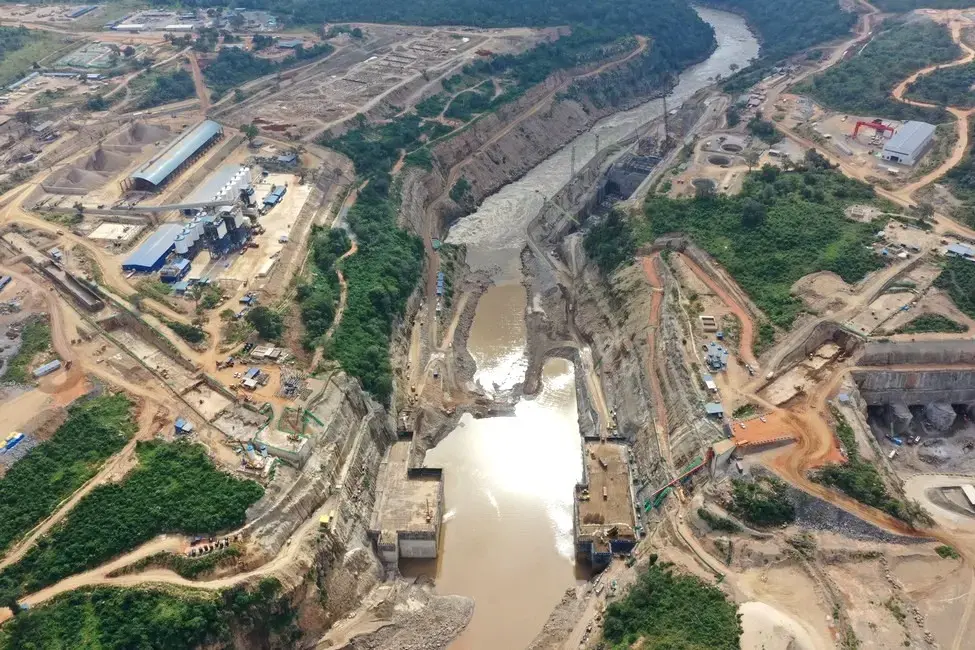
Investigation reveals first signs of disastrous impacts of environmental threats posed by Julius Nyerere Hydropower megaproject in Tanzania.
"This project is already a true ecological disaster,” says Darweshi*, a local environmentalist who wishes to remain anonymous. “Animals are totally disoriented – and even aggressive”, he explains. He wishes to take us to the Julius Nyerere ongoing construction site.
It’s easy to understand the young man’s concerns for anonymity – after all, Tanzania’s former environment minister had warned in 2018 that: “anyone opposing the project will be jailed”. Prison isn’t the ideal place for a fresh graduate to start a career.
Standing at the eastern gate of the Nyerere Park, a UNESCO World Heritage Site, he looks at the most unusual parade of the vehicles entering, composed of massive construction trucks followed by a few land cruisers occupied by some – distressed – foreigners.

As a nonprofit journalism organization, we depend on your support to fund more than 170 reporting projects every year on critical global and local issues. Donate any amount today to become a Pulitzer Center Champion and receive exclusive benefits!
The average tourist wouldn’t expect to be part of such a picture, but the park remains open despite the construction of one of the largest dams in East Africa, across Tanzania’s longest river, the Rufiji.
To navigate through the reserve – Tanzania’s largest – one now has to go through perpetual clouds of dust raised by these transport trucks largely filled with cement and gigantic pipes.
Explosions, dust clouds and continuous traffic at a “World Heritage” site
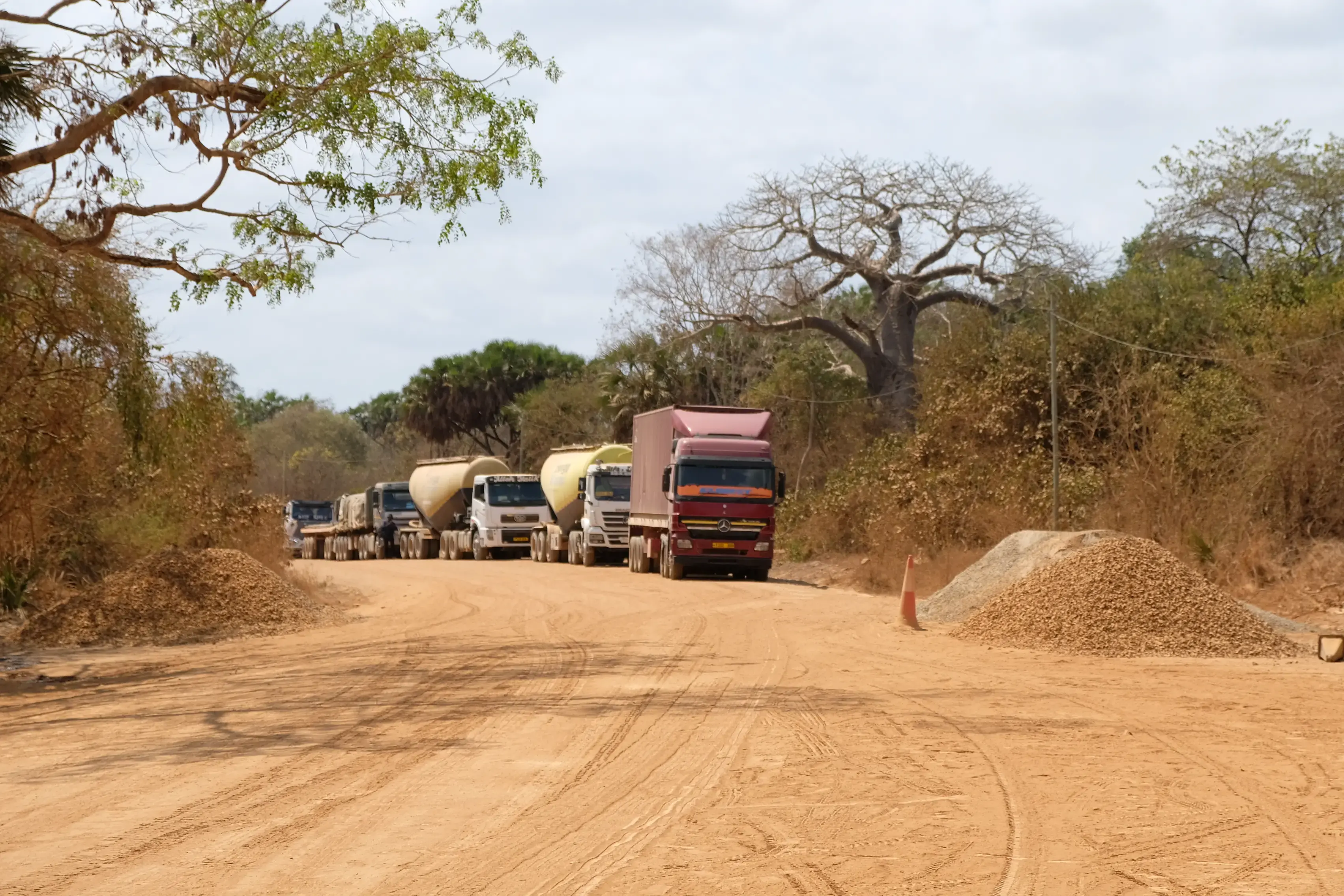
This controversial hydropower megaproject sparkled “grave concerns” by UNESCO’s World Heritage Committee, which ultimately called on the Tanzanian government to abandon it in 2020, according to the Environmental Investigation Agency (EIA). The main reason for this was insufficient research on socio-environmental impact linked to the dam.
The International Union for Conservation of Nature (IUCN) had even declared the dam project to be “incompatible” with the reserve’s UNESCO World Heritage status, based on a the project’s Strategic Environmental Assessment (SEA), which a review found to be “completely inadequate”.
Improper implementation of the 430 feet high and 2,300 feet wide dam could severely impact the Rufiji river and its complex hydrological system, causing a wide range of short and long-term damage to wildlife and even mangrove forests systems, which provide essential resources for the population of the Rufiji Delta downstream.

“Available spatially distributed biodiversity data shows that twelve endangered specie are to be found in the immediate vicinity of the Park. Among them are the African Bush Elephant, the Masai Giraffe and the Hooded Vulture”, according to Christina Orieschnig, researcher in hydrology and remote sensing engineer for the Environmental Investigative Forum.
Darweshi has already witnessed the very first and immediate consequences of this colossal energy project. He used to be a Nyerere Park young guard himself in 2021, as part of his conservation studies assignments. According to him, the negative impact of ongoing construction on these species can already be felt on the ground
“50 to 60 trucks pass through these gates every day. The dust and the continuous noise cause great disturbance to some iconic species here. Don’t forget we’re in a Big 5”, he explains. “Big 5”is the expression used to promote safaris offering to observe giraffes, buffaloes, lions, elephants and rhinoceros.
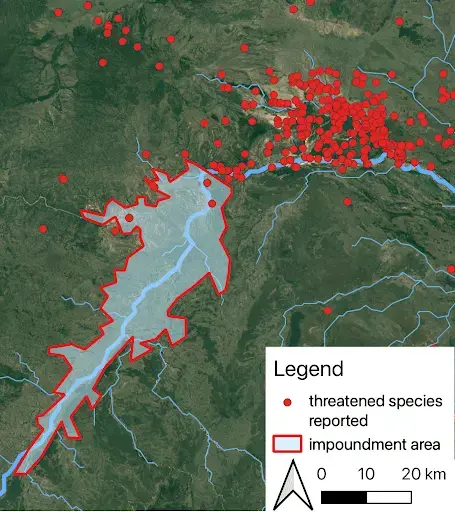
But the actual number of impacted species could be much larger once the projected impoundment area (approximately 964 km2) will be filled with water. “A large cluster composed of species classified as threatened is likely to be affected”, according to Orieschig’s research.
“Significant habitat extents for endangered species such as elephants and wildebeest are going to be lost to impoundment”, she concludes. These species already appear to be disturbed today.
“The ongoing construction is already causing elephants and other animals to flee the reserve from disorientation – or even to attack some vehicles. And this doesn’t only impact the construction site, but the whole reserve. Many problems have been recorded by the park, including road accidents regularly involving antilopes”, shares Darweshi.
This situation leads to surreal scenes that construction workers themselves have uploaded publicly to Google Reviews:
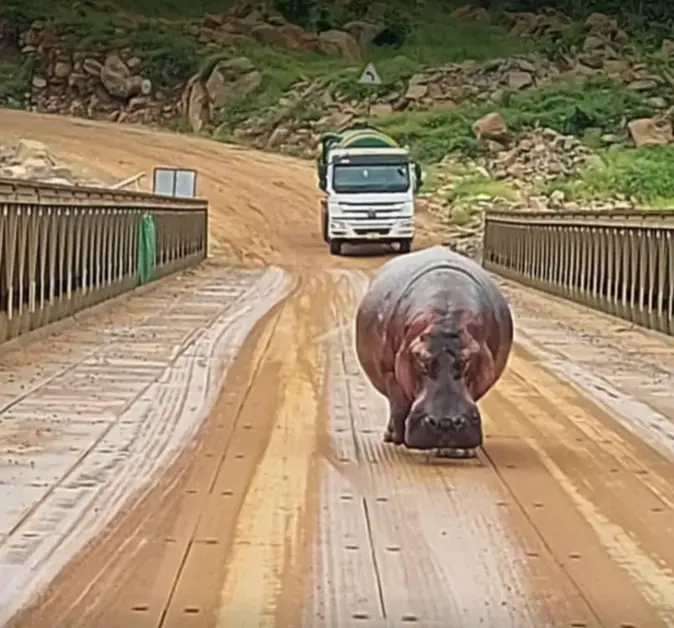
No fines have been issued by the Park authorities towards the construction companies regarding these repeated incidents, the young man adds. These entities comprise TANESCO, a local developer, as well as two Egyptian companies: Arab Contractors, which is state-owned, and El-Sewedy, which belongs to the private sector, as well as the Chinese state-owned company Sinohydro.
In a recent interview, Arab Constructors representative admitted some “isolated incidents” during the constuction, but dodges the potential negative aspects of the project on a longer term.
“The guards fully assist these companies and make sure no one accesses the construction site or documents what is going on here”, he continues. Indeed, after some long hours on bumpy roads through the Park leading us to the site, we are eventually stopped by the Park authorities and brought back to the entrance. “Further down the road, it’s the army you will have to deal with”, they warn.
Despite these tight surveillance measures, the Egyptian-backed company Arab Constructors isn’t shy when it comes to communicating images from the ground and sometimes does so in true Hollywood-fashion, like in the following drone footage showing various explosions set off within the UNESCO World Heritage Site.
Satellite imagery analysis provided by Orieschnig also shows that 7.4 km2 of land cover change could be recorded since 2016 on the plant’s site – including 87% of forest loss and 12% of shrubland deforestation.
This is a comparatively small deforestation figure compared to the 1000 km2 forecasted by UNESCO and the IUCN. The reason for this is that the dam isn’t operational yet, and this forecast is expected to happen in the long term.
East Africa’s “Mangrove Capital” at risk over Julius Hydroelectric plant
While this 1000 km2 forest cover loss within the reserve would be a disaster on its own for local wildlife habitats, yet another threat to biodiversity lurks about a hundred fifty kilometres away from the plant itself, on the Tanzanian coast.
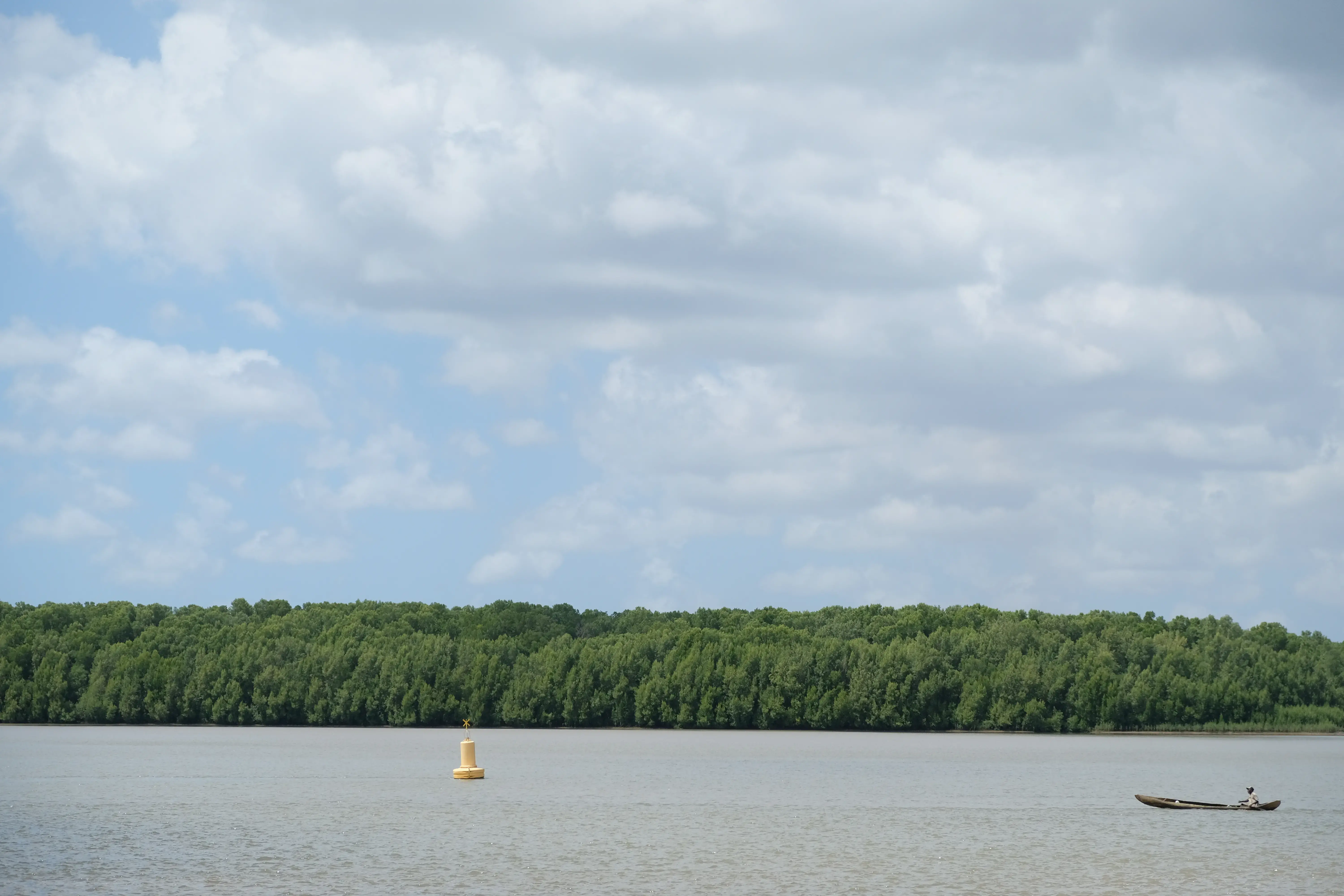
It is there, in the downstream part of the river, that the Rufiji Delta hosts about 55,000 hectares (135,900 acres) of mangrove forest, a subtropical type of coastal forest that has proven to be a key factor of CO2 sequestration worldwide, NASA coining it as real “carbon sinks”. The Delta itself is part of the larger Rufiji-Mafia-Kilwa RAMSAR site, a wetland of international importance.
With deforestation having led to the depletion of 30-50% of the world’s mangrove forests in the past 50 years, translating to an average of 317 million tons of CO2 emissions per year, the struggle for mangrove conservation is believed to be essential in the struggle to of mitigate climate change.
In the Rufiji Delta, many villages chiefs, local farmers and fishermen are well aware of the importance of preserving these tropical rainforests – even though agricultural pressure still curbs recent conservation efforts, notably through rice farming.
But the Tanzanian government’s educational efforts since the late 90s are only slowly starting to make their mark on the local population, who seems largely unaware of the Julius Nyerere’s dam development and its potential impact on local mangroves.
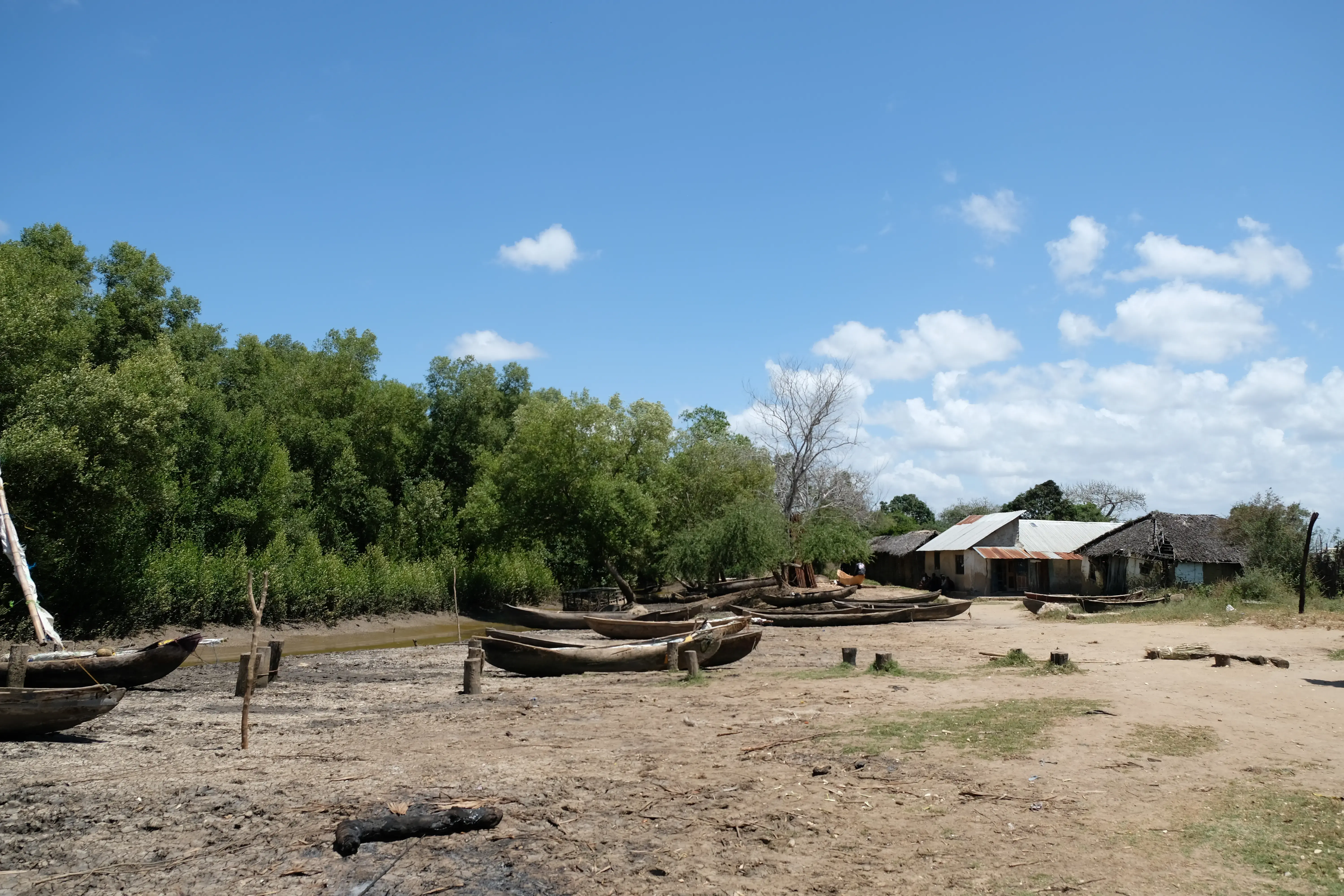
Mtunda, Kikale, Nyambati, Mchungu – in none of these isolated villages of the Rufiji Delta could a single soul be found who was aware of the ongoing project that could lead to deforestation at a much larger scale than their own lifestyle.
By modifying the river’s water levels and its natural flow, the Julius dam could asphyxiate these regional mangrove forests, stated to be East Africa’s largest. But according to Oriesching, any projection is difficult to establish on the matter, in the absence of the data necessary to construct detailed models.
While not providing this information, Arab Constructors admitted that two water flowing incidents had already happened during the project development, destroying part of the construction site and its surrounding but “without any negative impact on the environment”.
Could this upcoming impact on mangrove be severe, average – or only minor? The lack of publicly available information on the matter makes it impossible to answer these questions. This is the main reason eason why the UNESCO, the IUCN and the EIA raised serious concerns, commenting on the incomplete strategic environmental assessment by the consortium of companies involved in the project.
Is this the price to pay for Tanazia’s energetic independence? Contrary to the rhetoric used by Tanzanian authorities to justify the project, there might not even be any clear socio-economic benefit to it. In fact, its actual costs could even reach US$ 9.852 million, approximately 2.7 times higher thaninitially estimated, according to independent researcher Joerg Hartmann.
El-Sewedy electrics didn’t answer our requests for comments. Neither did its owner, the Egyptian government, which only recently hosted COP27. Their Chinese counterparts also declined to comment, despite China having presided over the so-called “historical” COP15 deal on biodiversity, which promised to protect 30% of the world’s surface by 2030.
Asked on whether the two countries would also commit to disengage from alarming projects located within areas that are currently protected, such as Nyerere World Heritage site, both the Chinese and Egyptian ministries of environment failed to answer or comment.
According to local press sources, the main body of the plant was completed in late October 2022. Still, no flowing model has been publicly disclosed regarding the dam’s future hydroelectric operations.
UNESCO has since classified the Nyerere reserve as a “World Heritage Site in Danger” in reaction to Tanzanian authorities’ continuation of the dam, while the IUCN has stated that downstream impacts could negatively affect the lives of over 200.000 people.
- View this story on Daraj
- View this story on AfricaBrief















